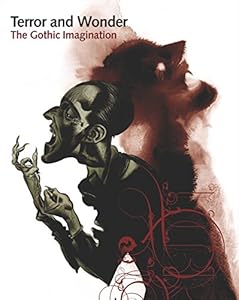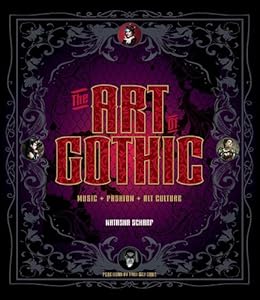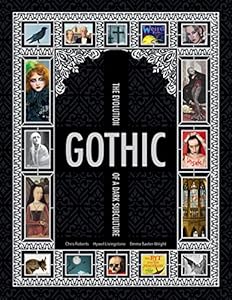 Terror and Wonder (ed. Dale Townshend, British Library) is of course the 'official' volume in this collection, the assembly of essays accompanying the blockbuster BL exhibition tracing the development of the Gothic imagination over two and a half centuries. It is by no means a catalogue of the exhibition, as such, although a great deal of what was on show also appears in these pages. The scheme is basically chronological, with some attempt to distinguish different concerns addressed by the Gothic at different historical epochs. I found some of Lucie Armitt's contentions in her chapter on 20th-century Gothic a bit contentious, but the book is clearly written and very attractive despite the bit wodges of text.
Terror and Wonder (ed. Dale Townshend, British Library) is of course the 'official' volume in this collection, the assembly of essays accompanying the blockbuster BL exhibition tracing the development of the Gothic imagination over two and a half centuries. It is by no means a catalogue of the exhibition, as such, although a great deal of what was on show also appears in these pages. The scheme is basically chronological, with some attempt to distinguish different concerns addressed by the Gothic at different historical epochs. I found some of Lucie Armitt's contentions in her chapter on 20th-century Gothic a bit contentious, but the book is clearly written and very attractive despite the bit wodges of text.
Gothic: Evolution of a dark subculture (C. Roberts and contributors, Goodman) is a bit odd. It's a very glossy hardback (in fact quite a bit of the cover is silver, although my copy isn't as elaborate as the one in this picture seems to be) and is gorgeously illustrated, but although there is a very welcome (because unusual) chapter on medieval Gothic, the subjects it covers seem to be organised around the enthusiasms of the contributors rather than following a considered scheme. I'd describe the style as would-be weighty, dealing with matters which are normally the preserve of the academy in a not-quite-academic manner. I'm still trying to work out how this book came into being and what the thinking was behind it.
 I had to wait a bit for my copy of Some Wear Leather, Some Wear Lace (A. Harriman & M Bontje, Intellect Books) because the first modest print run of about 700 apparently ran out within a week or so of publication, despite the hefty cover price of £25 for what is a modestly-sized paperback. The text's author clearly doesn't have English as their first language, but get past that and you have a rather wonderful evocation of the early years of postpunk and Goth - a movement which, the book believes very emphatically, was dead by 1992 or so (I need to do some thinking about that). The many people who have contributed memories and photographs clearly have a drive to have this unique moment in their lives and in popular culture recorded, and these missives from a less self-conscious age to ours - in which the selfie is the great cultural expression - show brave young people trying to be different. It has a haunting quality.
I had to wait a bit for my copy of Some Wear Leather, Some Wear Lace (A. Harriman & M Bontje, Intellect Books) because the first modest print run of about 700 apparently ran out within a week or so of publication, despite the hefty cover price of £25 for what is a modestly-sized paperback. The text's author clearly doesn't have English as their first language, but get past that and you have a rather wonderful evocation of the early years of postpunk and Goth - a movement which, the book believes very emphatically, was dead by 1992 or so (I need to do some thinking about that). The many people who have contributed memories and photographs clearly have a drive to have this unique moment in their lives and in popular culture recorded, and these missives from a less self-conscious age to ours - in which the selfie is the great cultural expression - show brave young people trying to be different. It has a haunting quality. The biggest and glossiest book of all is The Art of Gothic (N. Scharf, Omnibus Press). It's also the most ambitious, in a sense: an attempt to delineate and record the artistic output of the Goth world as one of the means by which Goths explore and express themselves. Whereas the chapter on Art in Gothic: Evolution ... is about high art you find in galleries, here you get applied art, which is in some ways far more interesting: there are a lot of record sleeves, but other forms from fashion to furniture, often bolstered by fascinating interviews with the people who actually make these things. Ms Scharf has a very good stab at trying to separate the various streams of influence on modern Goth which affect the way it looks, and even when the categories make you scratch your head a bit you can see what she's driving at. I think this book is an absolute triumph.
The biggest and glossiest book of all is The Art of Gothic (N. Scharf, Omnibus Press). It's also the most ambitious, in a sense: an attempt to delineate and record the artistic output of the Goth world as one of the means by which Goths explore and express themselves. Whereas the chapter on Art in Gothic: Evolution ... is about high art you find in galleries, here you get applied art, which is in some ways far more interesting: there are a lot of record sleeves, but other forms from fashion to furniture, often bolstered by fascinating interviews with the people who actually make these things. Ms Scharf has a very good stab at trying to separate the various streams of influence on modern Goth which affect the way it looks, and even when the categories make you scratch your head a bit you can see what she's driving at. I think this book is an absolute triumph. 

No comments:
Post a Comment